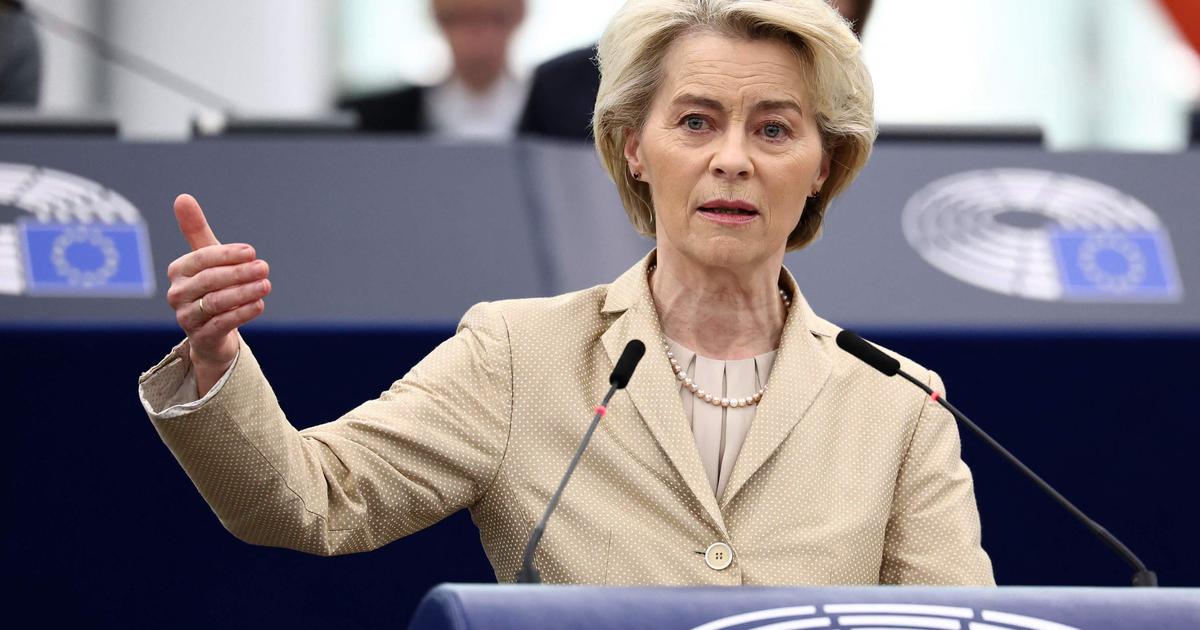What if the West indirectly used Russia to support Ukraine?
Since the Russian invasion of February 2022, sanctions against Moscow have been raining down.
Particularly financial: some 300 billion euros of assets of the Central Bank of Russia have been immobilized and frozen by the EU and the G7 countries, according to figures from Brussels.
The question of their use to help kyiv in its war against its hated neighbor is becoming more and more acute today.
But all is not so simple.
This Wednesday, the President of the European Commission Ursula von der Leyen declared herself in favor only of
the use of “exceptional profits from frozen Russian assets
”, and this
“to jointly purchase military equipment for Ukraine”
.
“There could be no stronger symbol or greater use for this money than to make Ukraine and all of Europe a safer place to live
,” declared the boss of the European Parliament in Strasbourg. of the European executive, campaigning for his re-election.
Ursula von der Leyen's proposal therefore does not concern the 300 billion euros of Russian assets immobilized outside the country.
On the one hand because, of these 300 billion, only 200 billion are frozen in European institutions, mainly at Euroclear, the first clearing house on the Old Continent, a cross-border fund deposit and settlement company established in Belgium.
On the other hand because the German leader only talks about the income generated by these assets.
Or
“3 to 5 billion euros in revenue per year”
, estimated Bruno Le Maire this Wednesday in São Paulo, on the sidelines of a meeting of the G20 of Finance Ministers in Brazil.
Read alsoWar in Ukraine: Brussels attacks companies that help Moscow circumvent sanctions
“No legal basis”
The French Minister of Economy and Finance recalled that France had been at the origin of this proposal, in October 2023.
“We are in February 2024, the French proposal was accepted and implemented, now we have the money available,
declared the tenant of Bercy.
What are we using this money to support Ukraine for?
I think this needs to be discussed.
Ursula von der Leyen proposed that this be used to purchase weapons.
Why not.
There are several options on the table, we need to work on them.”
For now, the Europeans have only agreed, in mid-February, on the freezing of profits generated by these assets and on their separate accounting.
A decision paving the way for a
"possible establishment of a financial contribution to the EU budget which will be collected from these net profits in order to support Ukraine and its recovery and reconstruction at a later stage"
, explained the European Council on February 12.
According to information from Politico, the European Commission is expected to present a plan in mid-March which will detail the use of these exceptional revenues to support kyiv.
Despite calls from Washington, the Europeans remain reluctant to seize all of the frozen Russian assets.
“The difficulty is that there is no legal basis
,” insisted Bruno Le Maire this Wednesday.
“Nothing would be more damaging for Western countries than not to act according to international rules
,” he said, judging that there was a
“risk of creating more divisions within the international community”
, and that Europe could be criticized for a policy of
“double standards”
.
Read also: Ukraine mobilizes investors for the challenge of reconstruction
Maximalist position of the United States
The day before, the American Secretary of the Treasury, Janet Yellen, had deemed it
“urgent”
and
“necessary”
to seize all of the frozen Russian assets,
“to contribute to Ukraine’s long-term resistance and reconstruction efforts.”
.
“There are strong arguments from international law, economics and morality to move forward
,” she insisted during a press conference in São Paulo, calling for joint action from the G7.
Last month at the Davos Forum, the Ukrainian Minister of Foreign Affairs, Dmitro Kuleba, annoyed by Western caution, brushed aside the "legal arguments" and declared that "
if there is the political will, the lawyers and the bankers will find the solution
".
The United States is not the only one to hold this maximalist position.
The United Kingdom, Poland and the Baltic countries are also in favor of using all of the frozen Russian assets for Ukraine, estimated by Washington at 285 billion dollars, or around 260 billion euros - less than the 300 billion mentioned by Brussels.
A senior American official recently clarified in Le
Figaro
the position of the Biden administration:
“Either Russia one day compensates Ukraine, or these frozen assets will be used.”
He also noted that
"a year ago, most capitals were against the seizure of profits from frozen assets, and that positions have evolved since then
. "
Will the same process be repeated regarding the seizure of all frozen Russian assets?

